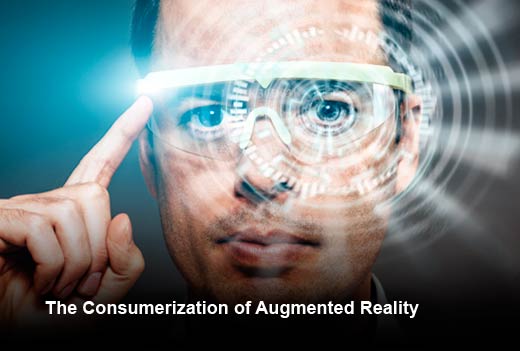This past July, Pokémon GO, a mobile game steeped in augmented reality (AR) technology, exploded onto the scene, making AR accessible to the masses. Within a few days of its availability, the video game reboot grew incredibly — quickly drawing millions of users across the globe and hitting its daily active users peak at 25 million. This phenomenon, fueled by a new, more accessible AR user experience, is driving people — even those with no prior interest in Pokémon — to explore ways they can harness the game’s inherent AR technology into everyday use, especially within the enterprise.
Previously a mystery, the consumerization of AR — made possible by Pokémon GO — has catapulted the conversation in the workplace, and now it appears that the technology is finally within arm’s reach for those savvy enterprises willing to reach out and grab it. Like any new technology, however, challenges around adoption are to be expected, but if the organization is amenable to change and is willing to dedicate the resources necessary to properly roll it out to employees (i.e., with education and insight into its benefits), the possibilities are endless.
Field service presents a strong use case for AR, as the advanced technology offered provides benefits for both workers and organizations, helping to achieve high-level business goals by maximizing field force productivity and making a direct impact on revenue opportunities. In this slideshow, Danny Korach, chief technology officer, ClickSoftware, outlines ways organizations — in field service and beyond — can apply augmented reality to increase productivity and affect the bottom line.

The Consumerization of Augmented Reality
Click through for ways organizations can apply augmented reality to increase productivity and affect the bottom line, as identified by Danny Korach, chief technology officer, ClickSoftware.

Improved Customer Experience
While 25 to 34 year olds have emerged as the predominant Pokémon GO user age group, the concept of AR can be appealing in a business setting as long as it’s implemented with the appropriate user experience in mind. This translates well in the retail industry, which has been quick to embrace AR because of its ability to improve the customer’s buying journey. Take for example IKEA, which enabled an augmented reality experience by allowing customers to virtually furnish their homes using an IKEA catalogue application (available for iOS and Android) or by browsing the pages in the digital catalogue on their smartphone or tablet. Clothing retailer Topshop created a complete virtual reality world that not only allowed customers to select garments off the rack without having to physically try them on, but also became the first retail AR experience where people could see the front and the back of the clothing. The automotive space is also using AR to help design cars, in turn helping reduce overall production time and cost.

Hands-Free Future
Developers are looking ahead to the next exciting wave of AR: leveraging the technology for a truly hands-free experience. AR is the perfect vehicle to bring workers — across a variety of industries — necessary data and information to accomplish tasks, while keeping their hands focused on the repair or other work. Take for example Recon Jet, a pair of Android-based smart glasses. While the Jet has been used mostly for fitness applications like running and cycling, Recon recently announced an enterprise partner program that will open it up to other uses too, including in industries such as field service or manufacturing to help improve workflows by giving workers a hands-free way to access mission-critical information or make “see-what-I-see” video calls. This facilitates real-time communication for workers in the field with remote engineers as they’re resolving an issue, or accessing a virtual manual for instructions on how to solve the technical problem.

Knowledge at One’s (Virtual) Fingertips
Although having gone through extensive training in their respective fields, field workers are tasked with retaining a host of information that they often have to draw upon at a moment’s notice. Take field service technicians on a service call — while they have the expertise to complete the majority of calls, there may be a few instances where the equipment is less familiar or a repair is more complex (which can cause delays, require return visits and overall added expense). AR serves as an effective channel for information flow. Support can be delivered by an expert back at headquarters via smart glasses or special headsets whereby instructions are displayed or communicated on the screen in front of them. The technology becomes a virtual help desk and improves two key metrics important to all field service managers: first time fix rates and average repair time.

Reducing Fuel Costs
With such detailed information now available to workers, deploying this technology could also help businesses reliant on mobile workforces to potentially reduce fuel costs while helping keep them and their bottom lines on track. Field service companies could dispatch fewer technicians into the field, while more experienced “experts” remain behind to help troubleshoot remotely.

Beyond the ‘Classroom’
Another benefit of augmented reality lies in its ability to serve as a highly visual and detailed training tool. Using AR in training means less allocation of funds for practice materials (as they can be made available virtually), and trainees can benefit from the ability to repeat tasks as many times as they need to without depleting resources. While this doesn’t completely replace traditional training, it does make the case for a more cost and time-effective training — as well as improved safety for jobs in complicated or dangerous situations. Gartner sees AR as a way to better equip firefighters to determine ambient temperatures, a building’s layout for exits, or potentially dangerous areas as it uses various device sensors to identify the conditions in the user’s surroundings.














